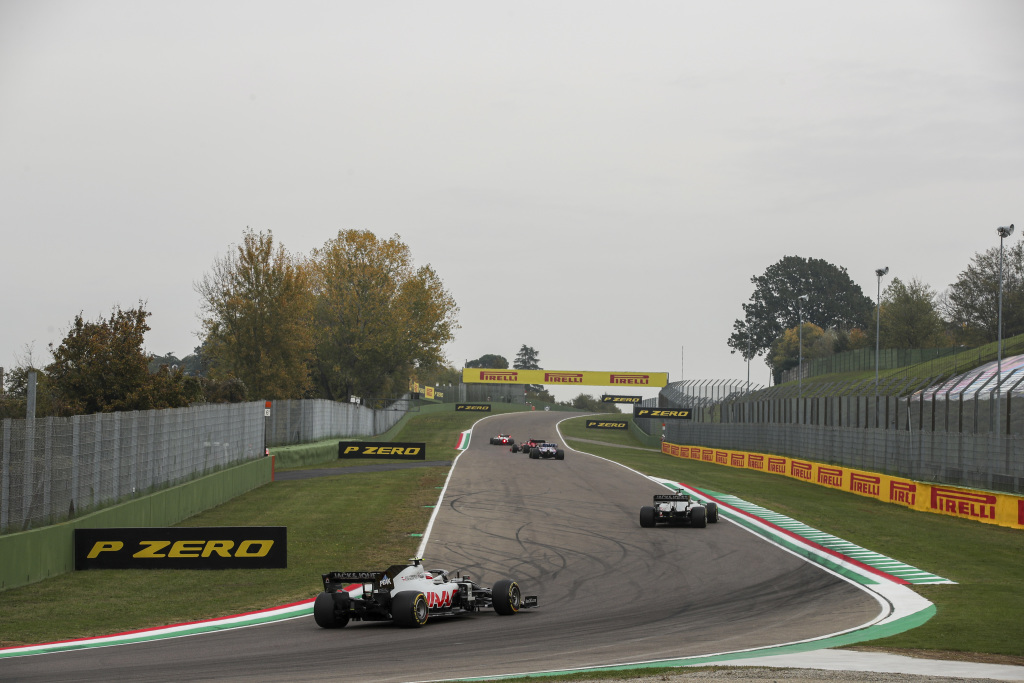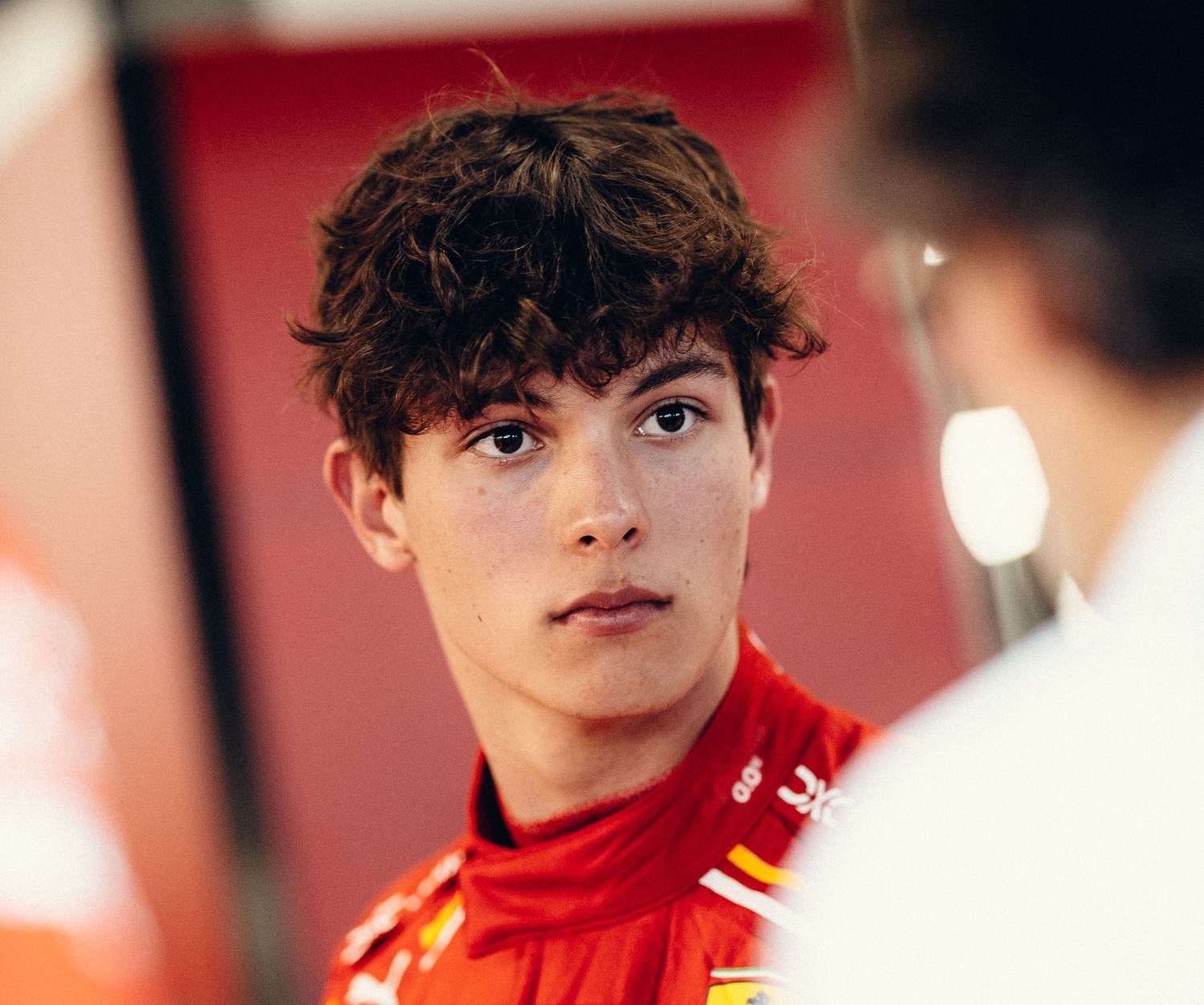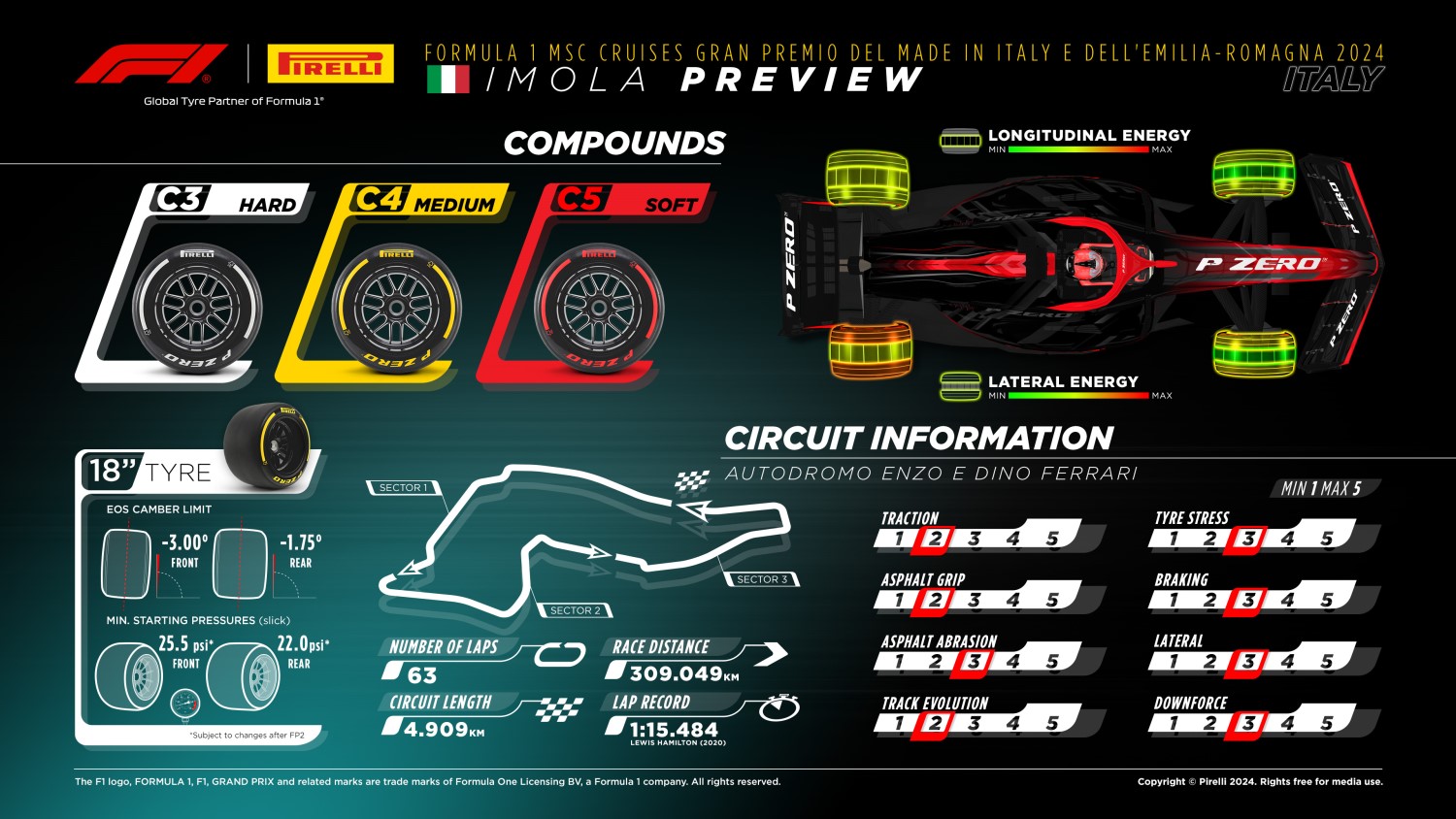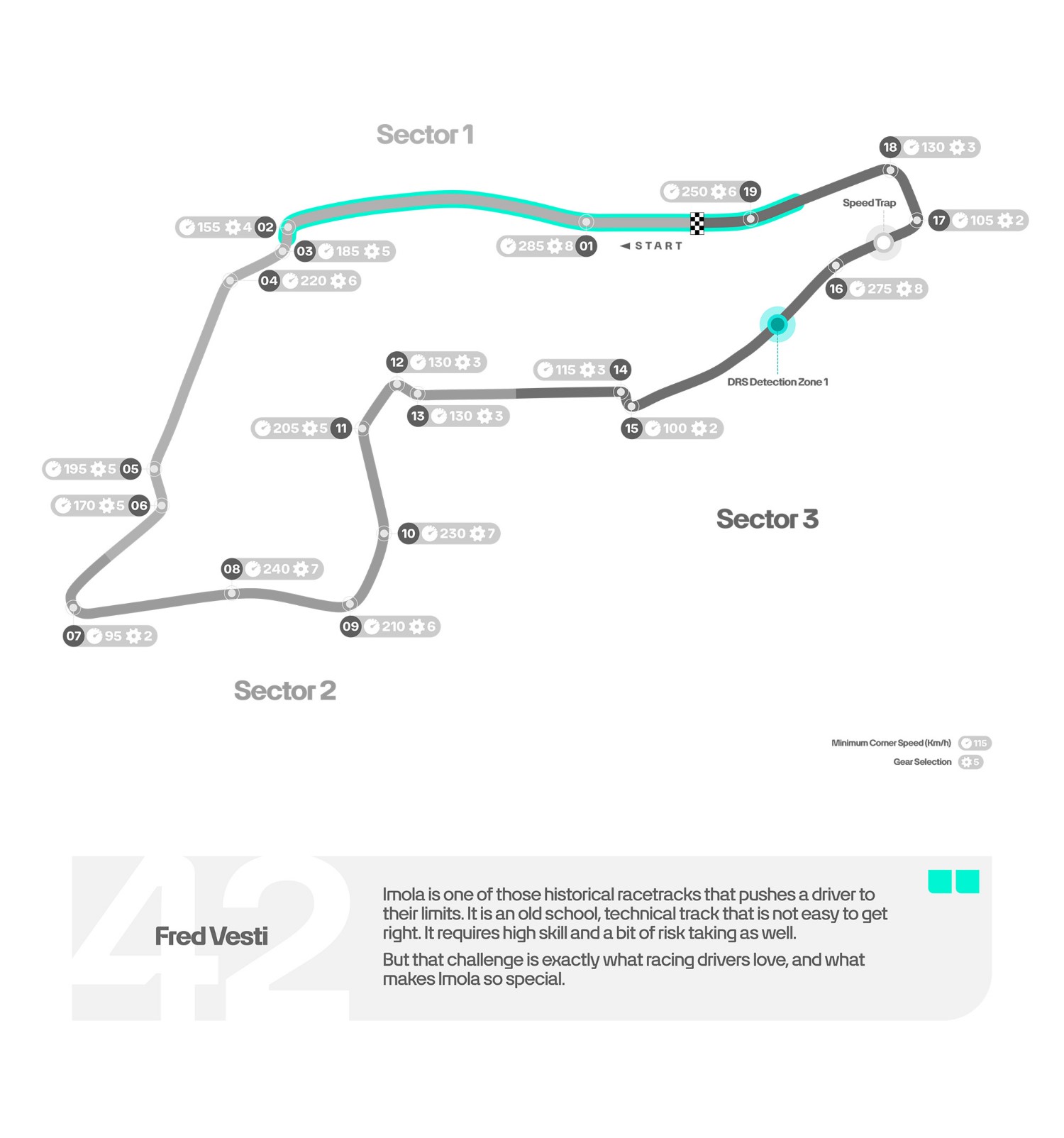Formula 1 News: 2024 Emilia Romagna GP Preview
The Formula 1 World Championship returns to Europe over eight months on from the previous Grand Prix to be held on the Old Continent and in the same country, Italy, that hosted that race in Monza on 3rd September last. In fact, Italy has hosted a total of 105 world championship Grands Prix, the most of any country, 30 of them at the Autodromo Enzo e Dino Ferrari in Imola.
This weekend’s race is only the fourth edition of the Gran Premio dell’Emilia-Romagna e del Made in Italy, previously held from 2020 to 2022, as last year’s event had to be cancelled because of floods that hit large parts of the region, causing some fatalities and devastation.
Max Verstappen dominated in 2022. Can he win again?
“Imola is always an iconic track to race at and we are excited to be back again after it was cancelled last year,” said Verstappen.
“We have had some great Team results here and it is always interesting to race at a really old school track like this, as it is very technical, with some complex combinations of corners and braking zones. The Team in Milton Keynes and trackside have all been working really hard and I have been back at the factory this week working on the sim.
“It’s nice to be back racing in Europe again too, so we are looking forward to seeing what the weekend brings.”
Located in a scenic part of the world, with rolling hills to the west and the sun-kissed Adriatic coast to the east, the circuit finds itself nestled in the center of an automotive landscape and culinary heaven. The venue, more commonly called Imola in deference to the surrounding town, joined Formula 1’s calendar in 1980 as the Italian round, and a year later was handed the San Marino moniker.

Opened in 1953, the racetrack on the outskirts of Imola is one of the most traditional circuits in Formula One, which returned here in 2020 after a 13-year break. The 4.909-kilometre rollercoaster course follows the natural contours of the Emilia-Romagna hills.
Imola was removed from the schedule after 2006, as Formula 1 went in pursuit of new territories, but it returned as a late stand-in round in 2020 when the world was grappling with the early stages of the pandemic. Under the new title of the Emilia Romagna Grand Prix – the region in which Imola is located – it was again run in 2021, and for 2022 features as the fourth round of the season.
Imola’s circuit boasts a variety of challenges, with a greater than usual emphasis placed on qualifying, owing to the narrow nature of the old-school track and the paucity of overtaking opportunities. The best chance is frequently into the Tamburello chicane, at the end of the lengthy full throttle section past the pit lane. Drivers dart between the verdant parklands and terracotta-colored houses that add to the throwback nature of Imola and give it an unmistakable character.

After confirming the race until 2025, as a result of the agreement between the Ministries of Foreign Affairs and Mobility, ICE, the Emilia-Romagna Region, the Municipality of Imola and Con.Ami, the Automobile Club of Italy and Liberty Media, this year’s event has already sold over 120,000 tickets. Tickets are still available on Tiketone, but a sellout is anticipated.
The Imola circuit is fast with one of the longest DRS zones, but overtaking remains difficult, which will play a role in setting the race strategy for the weekend. The weight-saving measures we’re bringing over the coming races will hopefully bring overall performance to the car. The weather forecast still gives a very small risk of rain on Sunday but it looks less and less likely that weather will play a big part in this weekend’s event.

Oliver Bearman to Drive Practice 1
MoneyGram Haas F1 Team Reserve Driver Oliver Bearman will make his first appearance of the season during Friday’s first practice.
Bearman (19) participated in two FP1 sessions for MoneyGram Haas F1 Team in 2023 and this year has joined as a Reserve Driver, a role he is also fulfilling at Scuderia Ferrari.
That led to Bearman making his Formula 1 debut in Saudi Arabia with Scuderia Ferrari, as the third-youngest racer in history, and he classified seventh on his one-off appearance. Bearman, part of the Ferrari Driver Academy, is due to participate in six FP1s through 2024 alongside his racing duties for Prema Racing in Formula 2.
Bearman will replace Kevin Magnussen in the VF-24 for the opening 60-minute session.

Weekend Weather
FRIDAY
H77° L54°, Mostly sunny and pleasant, 2% Chance of Rain
SATURDAY
5/18
H78° L57° Mostly sunny and nice, Increasing cloudiness, 2% Chance of Rain
SUNDAY
H 75° L 59° Cloudy, a 25% Chance of rain late
Tires for the Weekend
For the seventh round of the season, Pirelli has gone with the softest trio of dry tire compounds: C3 as Hard, C4 as Medium and C5 as Soft. It will be the first time this trio will be put to the test at the Emilian track, although it was to have been the choice for last year’s cancelled event. In 2022, the selected compounds were C2, C3 and C4.
Imola is one of the oldest fixtures on the championship calendar, known for being very technical and therefore highlighting the skills of the drivers who have to tackle quite complex combinations of corners and braking zones. Enzo Ferrari was one of the promoters of the project to build a circuit on the hills around Imola and he described it as a sort of “little Nurburgring.” Originally, in 1957, the venue was named in memory of his son Dino, his own name being added after his death in 1988.
The track is not particularly hard in terms of the forces exerted on the tires, even if the asphalt is still relatively abrasive, despite the fact that the last time resurfacing work was carried out on 70% of its almost five kilometer length dates back to 2011. With a busy program of track action over the Grand Prix weekend, the road surface offers a good level of grip that increases the more the cars run.
With 19 corners (10 to the left and 9 to the right) and a significant 30 metre elevation change from the highest point to the lowest, the track is rather narrow and there is only one DRS zone, making overtaking far from easy. Therefore, qualifying plays an important part in deciding the outcome of the race, which explains why it has never been won from lower than fifth on the grid and 19 times out of 30, the driver first past the checkered flag had started from the front row.
On paper, having the three softest compounds could produce more options in terms of pit stop strategy in a race that usually would require just one tire change, especially as time lost in the pit lane here is one of the highest of the year. There is also the strong possibility of the race being neutralized at some point, something that has happened in over 70% of races run at Imola to date. Recently, a few minor modifications have been made to the track, including the reintroduction of gravel on the outside of the Acque Minerali corners, leading to a much greater penalty for anyone going off at that point.
Thirty Grands Prix have been held alongside the banks of the Santerno river that runs past the circuit. The current name is the third to be attributed to the race at Imola. It first appeared on the calendar in 1980, the one and only time the Italian Grand Prix was held anywhere other than Monza. Then, from 1981 to 2006, Formula 1 raced in Emilia under the flag of the nearby Republic of San Marino. In the troubled times of Covid, racing’s blue riband category found a welcome in Imola as the Gran Premio dell’Emilia-Romagna, with the words “Made in Italy” added to its title as from the following year.
Of the 20 drivers entered this year, only Fernando Alonso raced at Imola when it was known as the San Marino Grand Prix. The Spaniard won in 2005 after a thrilling duel with Michael Schumacher, while the following year the positions were reversed between the two rivals. The German is the most successful driver at Imola, with seven wins, six of them with Ferrari, one with Benetton, while Williams and Ferrari share the honors among the teams with eight apiece. When it comes to pole positions here, Ayrton Senna tops the list with 8, the last of which he secured on 30 April 1994, a day overshadowed by the death of the Austrian driver Roland Ratzenberger. The following day, 1st May, the same fate befell Ayrton in what was one of the most tragic weekends in the history of the sport. To mark the 30th anniversary of their deaths, this weekend a series of events have been organized by the promoter and the entire Formula 1 family.

Fact File: Emilia Romagna Grand Prix
- Construction of the Autodromo Internazionale Enzo e Dino Ferrari first started in 1950 and the circuit hosted its debut race in 1953.
- The track has hosted F1 races under three different names: the San Marino Grand Prix, Italian Grand Prix and Emilia Romagna Grand Prix.
- Having hosted a race every year between 1980 and 2006, the circuit disappeared off the calendar in 2007, but returned in 2020 as the Emilia Romagna Grand Prix.
- The 2023 edition of the race was cancelled due to devastating flooding around the track and in the surrounding region.
- At 548 meters, the distance spent under the pit lane speed limit at Imola is the longest on the calendar.
- It takes drivers nearly 25 seconds to navigate during a stop in the race.
- The race also has the highest level of fuel consumption seen on the 2024 calendar.
- With an average ambient air temperature of 14.8 degrees, the race could also be described as one of the coldest of the season.
- Changes have been made to the track for 2024. The run-off area at T9 has been removed and replaced with a gravel trap, while the asphalt run-off area on the exit of Turns 11, 12, and 13 has been reduced in favor of gravel too.
- Because Imola is an older track, it has quite a narrow circuit width compared to modern circuits. This makes overtaking more challenging and puts more emphasis on strategy to make up places.
- There’s a 575-meter stretch from pole to the first braking zone, which is one of the longest on the calendar and means we often see changes of position at the start.
- 71% of the lap time is taken at full throttle, which is quite high compared to most other 2022 F1 tracks. This includes 15 seconds of foot-to-the-floor lap time from the exit of the final corner to the braking zone for Turn 2.
- Imola has an average apex speed of 205 km/h, the third highest on the 2022 F1 calendar, behind Silverstone and Suzuka.
- There’s a wide variety of corner types and speeds at Imola, requiring a car with a wider operating window – the complete opposite to a circuit like Monaco, for example, which has a much narrower corner speed window focused on low-speed turns.
- Because of the wider corner speed window at Imola, more compromise is needed on the set-up details of the car, to enable it to perform better in that varied mix of corner types. A balance also needs to be found between the ride on the bumpy track and the aero configuration for maximum aero performance.
- Imola has the highest accelerations seen all year on corner exit (what we call, gLong forces), due to the very high grip measured on the track’s tarmac and the very straight corner exit lines – unlike the long, sweeping exits you see at other F1 venues such as Silverstone. The average longitudinal acceleration on corner exit at Imola is 1.5g.
- George’s Race Engineer, Riccardo Musconi, is from Imola and his primary school looked out onto the Imola circuit – so it’s hardly surprising he ended up working in motorsport!

Unlocking the Lap
Running through a beautiful parkland setting, the circuit offers twelve left-hand and nine right-hand corners, situated deep within the Emilia Romagna region. The bumpy Imola circuit is narrow in places, making overtaking both challenging and risky, so strategy is key.
The circuit retains many of the elements that previously made it such a daunting and thrilling race circuit, including the overall fast-flowing nature and unusual anti-clockwise direction. The famous corners at Piratella, Acque Minerali and Rivazza are all as demanding as they ever were and the run from the second part of Rivazza to the chicane at Tamburello is now flat-out as it passes the new pit complex.

Picking out the key elements of a lap around Imola is no easy feat considering its series of iconic corners, but few impact lap time as much as Piratella and Acque Minerali.
The Tosa hairpin sets up a run to Piratella, and a good exit is key for taking the corner flat out. Drivers tend to pull right on approach, braking lightly, and then accelerating through a 5G corner with little run-off.
There’s no rest, though. Drivers fly out of the exit of Piratella and descend to the flat-out Turn 11 entry, immediately setting the car up for the following corner. Here, there’s the immediate challenge of following straight-line braking with a change of direction across multiple gradient changes at Turn 12.
It’s then followed by a small kink that tightens on the exit at Turn 13 before drivers use all the traction they can to power up towards Turn 14 and continue their lap.
